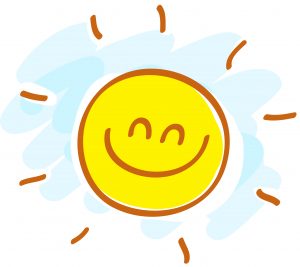It’s been a welcome sight these last few days, the bluest sky and the warm spring sunshine making people feel the urge to get outside. The air is full of the smell of charcoal burning, the sound of lawnmowers and the ice cream van. Everywhere people are sporting ill-judged outfits and exposing way more flesh than usual, desperate to get themselves beach-ready.
It’s a good idea to consider sun and heat safety when you are supporting people who may not be able to take care of themselves. I have often seen severe sunburn in Service Users who have been out and about with care staff, mainly due to accidentally overlooking some important considerations.
Take it steady
Gradual exposure is best for people who spend most of their time indoors, in wheelchairs and covered up. People may not have had the opportunity to be outside and therefore have not developed skin that can tolerate a blast of sunshine. Those of us who are regularly out in shirt sleeves and vest tops have prepared our skin better, but even those who tan easily should take precautions and use a sunscreen.
Slap it on
For pale and interesting people who don’t get out much, a sunblock is needed and at least factor 50 is advised. Remember to re-apply often, too. Once is not enough! Don’t expose shoulders, chests and limbs usually covered by clothing to excessive amounts of sunlight. For the more robust, you should still use at least factor 15 and everyone should try to stay out of the sun between 11am and 2pm, as this is the hottest part of the day.
Medication Risk Factors
Some drugs commonly used with people with learning disabilities can have side effects that make the user more photosensitive. These include the anti-convulsants Phenytoin, Phenobarbitol and Carbemazapine as well as Paroxetine, Chlorpromazine, Amitriptyline, Fluoxetine and even Ibuprofen and diclofenac. Check the British National Formulary online to make sure you keep people safe from exposure to sun that could cause really serious burns.
Plenty to drink
Another common oversight is the need to stay hydrated. Its easy for us to go get a cold drink on a hot day, but if a Service User cannot communicate that they are thirsty, or help themselves to a drink, we should make sure they are offered plenty of fluids. And if Service Users are PEG fed, remember to increase the water flushes to alleviate dehydration through perspiration.
Shades on
Last of all, if you are styling your look with sunglasses and hats, then so should the people you support. Not just for fashion reasons; glare from the sun can cause headaches and eye damage, potentially leading to cataracts. Encourage people to wear a hat that shades the eyes and good quality sunglasses that offer 100% UV protection. A CE mark is also a good indicator.
Be sun wise – enjoy the lovely weather while it lasts, but make sure everyone is safe.




